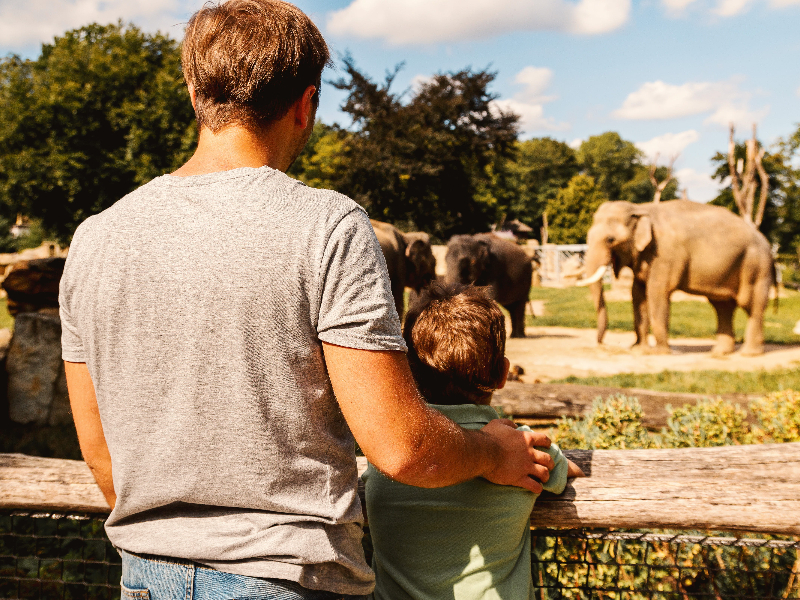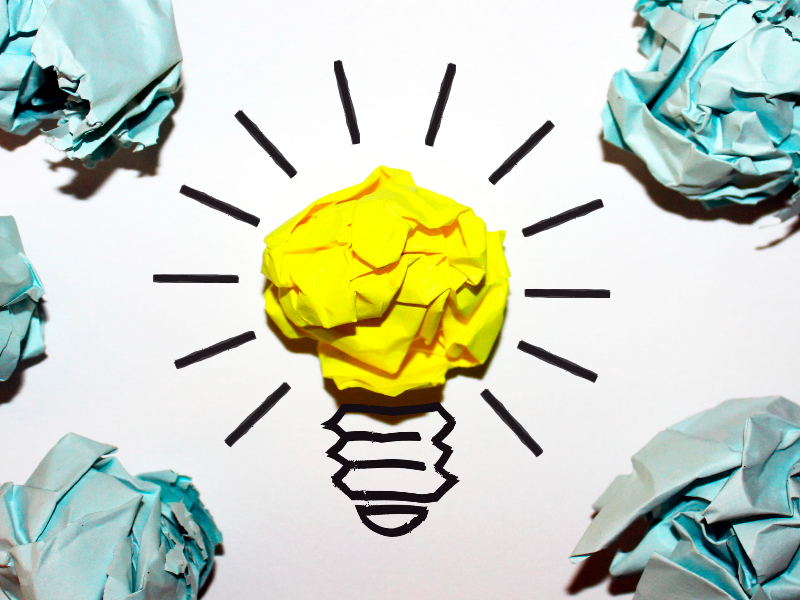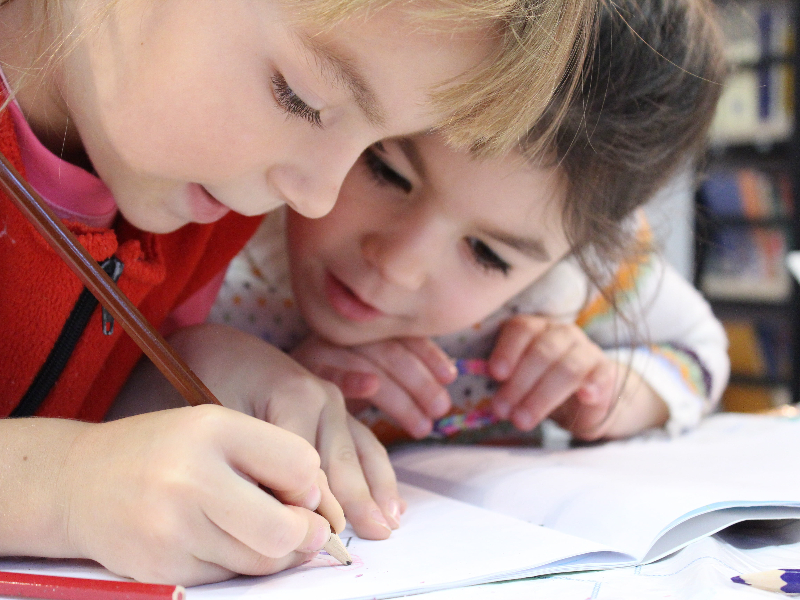Memorising content has been a part of our education world for ages. While many institutions still rely on developing a child’s cramming skills, the modern-day research in cognitive sciences & education psychology, backed by our lifetime experiences, has made quite a lot of us realise that success in academics, as well as real-life, do not lie in rote learning. Most of the new world situations require us to put our minds together to break a problem into its constituents, understand these parts in minute details, inter-relate these parts, and come up with novel and creative solutions.

The key question that we all need to ask ourselves is – “Are we equipping our children to deal with these unknown situations where there is very limited scope to fall back upon the past memorised content?”
To understand this problem better, let’s jump into understanding the mental action words or verbs as per Bloom’s Revised Taxonomy. But, before we do that, what is a Taxonomy? To put it simply – A taxonomy is a form of hierarchy or classification or a scientific system of arranging things.

The taxonomy that we are discussing in this blog was first published in 1956 by Benjamin Bloom, famously known as Bloom’s Taxonomy. Anderson and Krathwohl and a group of cognitive psychologists in 2001 produced Taxonomy for Learning, Teaching and Assessing – A Revision of Bloom’s Taxonomy of Educational Objectives from now on referred to as the revision. Bloom’s unidimensional model was revised to a model having two dimensions, namely, nouns and verbs, where:
- Nouns describe the content (knowledge) that is meant to be learned.
- Verbs describe what the children need to learn so that they know what to do with that content. It focuses on the cognitive processes (mental behaviour or actions) the child has to use to be able to work with the ‘knowledge’.
Since mental action words or verbs are the spotlights of this blog, we are making a conscious choice to explain the second dimension of the taxonomy, i.e. Verbs, before describing the 1st dimension, i.e. knowledge domains, of this taxonomy (we will be discussing the 1st dimension in the next blog).
The 2nd dimension in the revised taxonomy changed the terminology, i.e. the names of the earlier categorised six Cognitive Domains. The names of these cognitive process categories were changed to imply action, as thinking is an active engagement process. It also changed the hierarchy by bringing the earlier categorised highest order domain of ‘evaluation’ a step below the ‘creating’ domain. To simply put the rationale behind it – a person can evaluate information without being creative, but creative thinking requires some form of evaluation and critical thinking to be done to evaluate the effectiveness of creative thinking. Let’s dive deeper into each of these six domains and understand how our children think and learn.
- Remembering– At this stage, children can recognise or retrieve specific facts, definitions, or lists from the long-term memory. However, they might not be able to understand the information at this level of cognition.
- Understanding – This stage involves getting hold of the meaning of the presented information, i.e. grasping the definitions, concepts etc. This means children can determine the meaning of instructional messages in various forms of communication, i.e. oral, written & graphic.
- Applying – At this stage, children can use already learnt information in various other situations that might or might not be familiar, and they can carry out or use a procedure in a given situation.
- Analysing – At this level, children can break down information into its parts and find out how these parts are related to one another and an overall structure or purpose.
- Evaluating – At this level, children can judge how valuable the piece of presented information is or how reliable the source of information is based on their values or opinions. They can make judgments based on standards or personal views.
- Creating – This is the final level in the cognitive processes hierarchy referred to as children’s ability to creatively and uniquely apply prior knowledge to give birth to novel ideas, thoughts and processes, involving reorganising patterns of information to make a functional whole and an original product.
Now that we have explored these six cognitive domains, let’s understand how these domains work. The six domains in the taxonomy have always been seen as sequential and hierarchical. They rely on this assumption that until the time ‘Remembering’ skills aren’t well developed in the children, they cannot move to the next levels of the cognitive abilities like ‘Understanding’, ‘Applying’ and all the other higher domains up in the sequence.
Given the advancement and requirements of the modern world, where long-term memory might fail to catalyse the generation of new ideas and solutions, the hierarchical structure of the taxonomy might not hold. It might fail in situations that require the use of ‘Working memory or Executive Functions’ of the brain to do problem-solving, decision-making etc.
This then calls for a need to bring in alternate methods of learning for our children which does not rely on memorisation or long-term memory. A system of learning where the importance is not on building the memorisation capacity of the child but the ability to process information presented through short-term memory by using critical thinking. And that’s precisely where Konshius comes in! Bloom’s revised taxonomy and Konshius’ framework meet on the way to answer the question – “What is cognitive learning?”
Konshius has always been critical about the unnecessary attention given to memorisation. The vision of Konshius is to create a more inclusive approach to education that does not depend on the storage of content but on nurturing the individual capabilities of each child. As a result, our pedagogy moves away from the conventional way of viewing learning based on the accumulation of facts and information. At Konshius, the focus is more on making meaning of the subjective experiences rather than reducing the mental functions to recreating already stored information.

And we do all this through scientifically designed game playing experiences. The games at Konshius are designed to make use of the information presented in the context of games without relying on retrieval of information from the long-term memory. Through this, the children prioritise their sense of understanding to grasp the game elements and playing instructions. And, we made a conscious decision while designing our games that these elements and instructions should not take more than a minute for children to start playing the game. Furthermore, our pedagogy team ensured that all our games are free from any kind of long-term memory based content, including even the dependency on language skills, and are free from any type of social, cultural and academic barriers or interpretations. This enabled our games and instructions to be explained through sign language or visual demonstration. Grounded in our values, we are also working towards making these games relevant for the visually impaired. Thus making our learning games genuinely inclusive.
In our next blogs(Konshius’ & Bloom’s Revised Taxonomy – Part 2> and <Konshius’ & Bloom’s Revised Taxonomy – Part 3>), we will delve deeper into the 1st and 2nd dimensions of the taxonomy by looking at some exciting examples. I welcome you all to stay connected and bookmark this page so that you are the first ones to read when we post new updates here.

